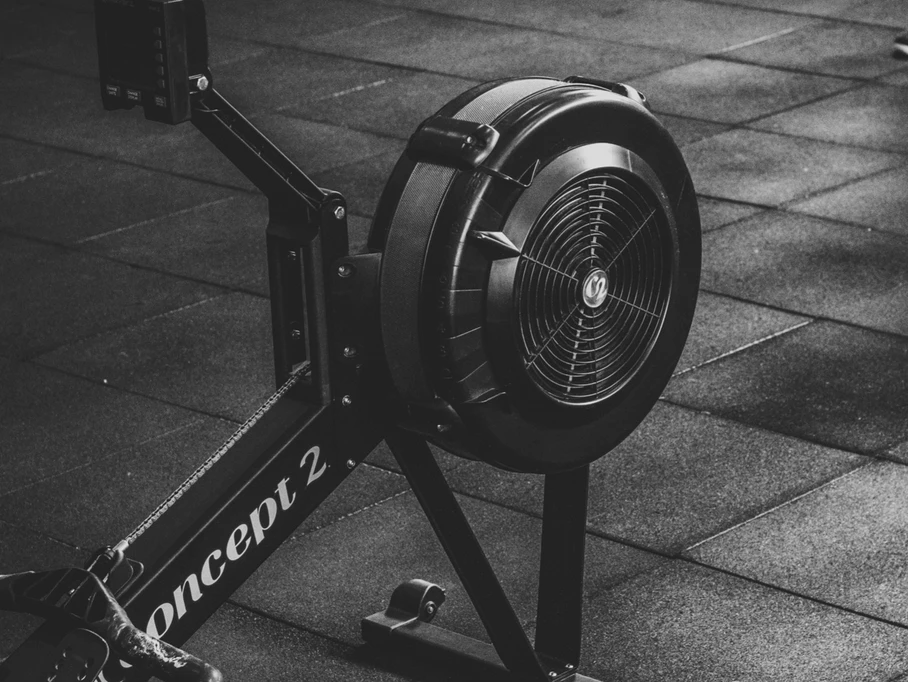
Conditioning Chronicles: The Aerobic Energy System
What do a jog in the park, a bike ride by the bay, and twenty minutes on a VersaClimber all have in common? They are all great forms of exercise, but more importantly, they are all great forms of aerobic exercise. When our bodies utilize oxygen to produce energy, we are engaging in aerobic activity and training our aerobic energy system. In this article, I will explain the strengths and weaknesses of the aerobic energy system, when it should be trained relative to your sport season, and provide strategies for training this particular energy system.
To begin, it is important to mention that the human body has three main pathways to produce energy. These three pathways are the aerobic system, the anaerobic-lactic system, and the anaerobic-alactic system. The aerobic energy system is unique when compared with the other two systems because it is the only system that requires oxygen to be present to function. In addition, the aerobic energy system is the only of the three that is able to draw upon stored fat to use as fuel. When compared with the other two systems, the drawback of the aerobic system is that it cannot provide fuel as rapidly. However, the aerobic system is able to provide energy for the longest period of time. Typically, longer duration activities performed at a low-to-moderate intensity level are deemed aerobic. Lastly, a strong aerobic base is a key indicator of both health and performance. Aerobic exercise is great for overall health, as it reduces the risk of many chronic health conditions and diseases, such as obesity, heart disease, and certain types of cancers. From a performance perspective, the aerobic energy system plays a critical role in the recovery process. Both anaerobic systems fatigue fairly quickly, but with a strong aerobic base, the body is able to clear out the excess waste produced so these systems can recharge faster. As the level of competition increases, it becomes less about who is the highest performer, but rather who can recover the fastest.
Now that we have discussed the strengths, weaknesses, and importance of the aerobic energy system, let us take a look into how aerobic training should fit into a training program. The two most important variables to consider are the demands of the sport and the individual athlete’s specific needs. An endurance runner is going to need more aerobic training than a soccer player, and a soccer player is going to need more aerobic training than a baseball player. Following up on this point, an individual with a lower training age will most likely need more aerobic conditioning than an individual who has been training for years. Like everything in the strength and conditioning world, conditioning exists on a spectrum. Think of conditioning like a puzzle. As a strength and conditioning coach, it is my job to balance and blend training of all three energy systems to match both the individual’s needs and the energy demands of the sport. Once I have determined the energy demands of the sport as well as the baseline conditioning level of the athlete, I can put the pieces of the puzzle together to create a conditioning program.
As previously stated, conditioning exists on a spectrum and different athletes will require different needs. With that being said, most athletes will benefit from training their aerobic energy systems in the early off-season. This is because the efficiency of the two anaerobic systems will be directly affected by how strong the aerobic system is. Remember, the aerobic energy system is primarily responsible for recovery and plays an important role in clearing waste produced by the other two systems. With this in mind, you can see why it is necessary to train the aerobic system prior to training the two anaerobic systems. As you get closer to pre-season and in-season, the focus will then typically shift towards conditioning the anaerobic energy systems. In regards to a daily training session, for most athletes, aerobic training should be performed at the end of a session or on a recovery day. However, if you are an endurance athlete, it is best to do your conditioning at the start of the session. Individual goals and needs will dictate how much of an emphasis is placed on conditioning and where it falls within your training program.
Now, having a strong aerobic base is extremely important to performance, however, there are some sports, such as, football, baseball, volleyball, and some track and field events, that place a greater emphasis on the anaerobic energy systems. The thought that purely training aerobically will translate to elite conditioning in these sports is a myth and a mistake. At this point I would like to take some time here to offer forms of aerobic conditioning that may be more applicable to sports that are primarily anaerobic. It’s important that the reader understands that there are two main types of muscle fibers, Type I and Type II. Type I fibers typically use energy slowly and can last a while before fatiguing. Type II fibers on the other hand are typically called upon when performing fast, powerful movements. Aerobic activities such as running, biking, and swimming primarily call upon our Type I fibers. For athletes who compete in sports that are primarily anaerobic, such as baseball and volleyball, it is beneficial to train the Type II fibers aerobically. Two methods that I like to implement to accomplish this goal are High Resistance Intervals and Aerobic Plyometrics. An example of High Resistance Intervals would be performing sled pushes, sled drags, or uphill sprints in an interval fashion. Each rep should be at maximal intensity for about ten to twelve seconds with around thirty seconds to a minute of rest. Because each rep is performed at max intensity with high resistance, Type II muscle fibers are recruited. By performing these exercises in intervals, we are then able to improve the ability of the Type II fibers to use oxygen. The same idea can be applied to Aerobic Plyometrics, but instead of using high resistance to recruit our Type II fibers, we utilize plyometrics. Plyometrics can simply be defined as an explosive movement that involves a rapid stretch and contraction of muscle fibers to produce power. As a matter of fact, if you’ve ever jumped rope, you’ve performed aerobic plyometrics! Jumping rope is a great beginner progression into the world of aerobic plyometrics and does not require a high level of skill to perform. Different intervals can be used depending on skill level. Jumping rope at a moderate intensity continuously for a long period of time will accomplish the goal, as will intervals of one minute on and one minute off. The main points to keep in mind are that we want longer duration work intervals with a work to rest ratio no greater than one-to-one.
In conclusion, aerobic training is a major key when it comes to both health and performance. General fitness clients and athletes alike will both benefit from including some type of aerobic work into their training. The beautiful part about it is, there is a method for everybody. Between running, biking, swimming, jumping rope, and interval training, everybody can find an activity that suits them. The key is to pinpoint what your goals and needs are, then find the method that best accomplishes them. Remember, you are not training aerobically to punish yourself, so find a method that you enjoy to make it easy to remain consistent. Although there are two other energy systems that fit into the conditioning puzzle, it is important to remember that the greater the aerobic base, the higher the ceiling of the other two systems. In addition, a strong aerobic base will translate to better recovery and therefore better performance. Remember, conditioning exists on a spectrum and there are thousands of ways to slice a lemon. Once you have determined your goals and needs, you can then determine the most efficient methods of conditioning. Whether you are training for health or performance, possessing a strong aerobic base will only benefit you.

